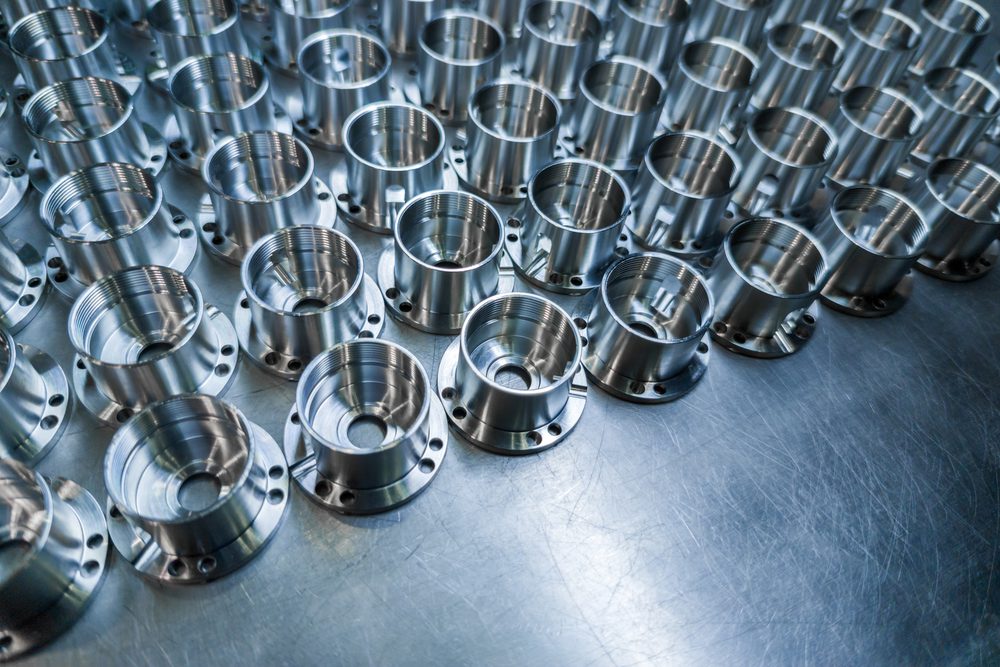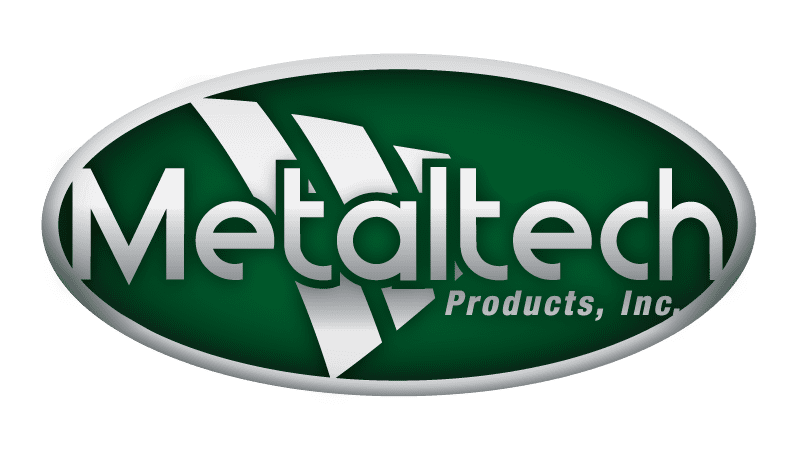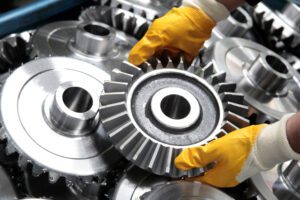Whether you’re an automotive, aerospace or consumer goods part supplier, you work with other manufacturers to create a final product—one made up of numerous components. New products or enhanced designs require newly fabricated parts.
Before starting a project, you need to know how much custom metal fabrication costs. How do fabrication shops come up with quotes? Production cycles, raw material prices and labor affect metal fabrication estimates.
Here’s what to know about things that influence custom metal fabrication costs.
What Factors Into the Cost of Custom Metal Fabrication?
Metal and steel fabricators determine pricing based on the material, design, labor and finishing processes required to complete a project. Fabrication quotes vary with these factors and trends in the industry. The cost to fabricate with aluminum differs from using steel, and a more complex part design will cost more to manufacture.
Shop estimators will show you how they calculate fabrication costs by providing a breakdown of these expenses.

1. Raw Material Choice
Custom components can be made with aluminum, carbon steel, stainless steel and other alloys. The raw material chosen affects the customer’s metal fabrication costs. Some materials are more expensive than others, and prices for all raw materials fluctuate depending on the market. As prices fluctuate, sheet metal fabrication estimates change.
Example: Hot-Rolled Steel Price Fluctuations
The price of raw materials factors into the cost of custom metal fabrication projects. Metal prices have been greatly affected by COVID-19. The pandemic shut down the economy in 2020, causing chaos across industries.
One year into the pandemic, steel fabricators struggled to meet high demand. In January 2021, hot-rolled steel prices hit record highs, skyrocketing to $1,080 per ton. With supply and demand off-kilter, hot-rolled steel prices increased to $1,270 per ton in March 2021 and $1,955 per ton later in September. Many steel fabricators had to pass some of the increasing material costs onto their customers.
Since then, steel prices have decreased. As of early January 2022, the steel price was $1,480 per ton, and it continues on a downward trend.
Consider the Properties of Metals
When choosing a metal, customers should consider the part’s final purpose. All metals have unique properties that may make them better for specific processes, environments and uses. You may need a metal with an attractive natural finish or corrosion-resistant characteristics.
| Material | Characteristics |
| Stainless Steel | High tensile strength, corrosion-resistant, attractive appearance |
| Mild Carbon Steel | Easily rolled into sheets (malleable), great weldability, susceptible to rusting, affordable |
| Aluminum | Low tensile strength, light, corrosion-resistant, low ductility, good malleability, difficult to weld |
| Titanium | High strength, low density, light, corrosion-resistant |
| Copper | Easily drawn into wires (high ductility), very malleable, excellent conductor of heat and electricity |
2. Total Labor Costs
The majority of a project’s cost is labor. Every custom metal fabrication project rests in the hands of several highly-skilled workers.
Engineers assist with the component’s design using CAD/CAM software and help build prototypes. Fabricators and certified welders produce the parts following the final blueprints. Additional labor costs come from machine setup and programming, loading and moving components, and inspecting components.
Don’t forget about the mechanical labor! Machines and welding robots do a lot of the work it takes to produce finished metal parts. As such, machine time factors into your total project cost.
3. Design Complexity
Design is a big factor when it comes to pricing your custom metal fabrication project. Simple component designs are less expensive. Parts with fewer cuts and welds take less time to complete. They also save time during the initial design and prototyping phases.
When components are intricate and require tight tolerances, designing and producing them takes more time. Complex part geometries often need specialized tooling or machining, adding to the total cost.
Every cut, bend, weld and punch adds more time and labor. For example, welding can increase project estimates based on the type of weld required. Fillet welds are precise, but more skill is necessary to complete them than stitch welds. This makes them more expensive.
4. Order Quantity or Volume
Quantity matters. When customers order large volumes of components, the price per component decreases. Larger projects limit machine setup times. Machines only need to be programmed once for the initial component. Every part that follows costs less because machine setup is no longer required.
Smaller projects or one-off projects are less expensive overall but cost more per part.
5. Metal Finishing Processes
Most parts need a final touch before they are ready for assembly or shipping. Sanding, painting, powder coating, cleaning and passivation are standard post-production processes. Finishes add texture, color and protective properties to parts. Any necessary finishing options will be tacked onto your project estimate.
Powder Coating for Durable Finishes
Add a durable, protective finish to your parts. Powder coating uses an electric charge to adhere pigmented resins to metal parts. Depending on the application, the powder materials may be polyester, nylons, epoxies or other chemistries. With powder coating, you can customize the color, gloss and texture of the finish.
Due to the nature of powder coating, you don’t have to worry about run-off or drips ruining the part. Powder-coated finishes are durable, and they can last many years under the right circumstances.
Metal Plating for Enhanced Materials
Protect parts from corrosion. Plating is a layer of metal added to the top of another metal for aesthetic purposes or a change in characteristics. The metal plating process can harden a part’s surface, improve its durability and even change its conductivity.
- Chromium plating. Chrome is applied for a bright and lustrous look. When used over zinc plating, chromate can change the color of the metal. In addition to chrome’s excellent aesthetics, hard-chromium plating adds fantastic corrosion resistance and increased hardness, making it a good choice for industrial and automotive parts.
- Zinc plating. Zinc creates a galvanized coating on many metals, resulting in a final product that’s highly ductile. Zinc platings protect iron and steel from rust because of zinc’s innate corrosion resistance.
- Nickel plating. Many household products are coated with electroplated nickel. Nickel plating is often used as an undercoat due to its exceptional adhesion properties. Electroplated nickel increases the function and resistance of the final product.
- Anodizing. Typically, anodic oxide finishes are applied to aluminum. Anodizing metal increases its corrosion resistance, resulting in attractive and durable finishes. Anodic oxide becomes one with the aluminum substrate, so it does not chip or peel. Nonferrous metals like titanium can also be anodized.
Metal Passivation for Stainless Steel
Stainless steels undergo chemical passivation to prevent corrosion. Iron is the base alloy in stainless steel, but stainless steel also includes nickel and chromium. When chromium comes into contact with oxygen, it forms a layer over the stainless steel’s surface.
During passivation, stainless steel is placed in an acidic bath and then exposed to oxygen. Nitric or citric acid removes free iron from the stainless steel’s surface so more chromium is present. Once exposed to oxygen, a protective oxide layer forms over the surface. This layer is less likely to rust or react with air and moisture, increasing the stainless steel’s longevity.


Ways to Reduce Custom Metal Fabrication Costs
First and foremost, choosing an appropriate metal will save you money down the road. Standard sheet metal gauges and sizes cost less than longer or thicker sheets. The thickness of a metal sheet plays into the project’s overall cost. Fabricating unique metal thicknesses requires more skill, labor and time.
Your material should match your application. Knowing the product’s use helps you determine the appropriate metal and finish.
Avoiding complicated designs is another way to reduce metal fabrication costs. Only include elements like blind holes and beveled edges if they are necessary. Simple angles and consistent bends make fabrication more effective, lessening lead times and overall costs.
Your design’s required accuracy can reduce or increase fabrication prices. Save tight tolerances for surfaces that are crucial for the part’s function. A limited number of tight tolerances makes projects more affordable.
Tips for Getting An Accurate Fabrication Quote
Accurate fabrication quotes help ensure surprise costs don’t pop up later. As the customer, you can help metal fabrication companies deliver on-target estimates. Provide the estimator with as much information as possible to get the best quote.
- Updated and detailed drawings
- Detailed specifications
- Material type, grade and gauge
- Finishing processes
- Assembly directions
- Estimated annual volume of production
If you don’t have these answers yet, most custom metal and steel fabricators provide recommendations based on their expertise. At Metaltech, we offer design services to help you determine the best materials, angles and geometries for your components.
Do you need a full-service shop? Or someone to machine or weld your components? Metaltech can partner with you from design to delivery or assist you at any step in between.
Request a quote today. Let’s work together to bring your custom metal components to life.





